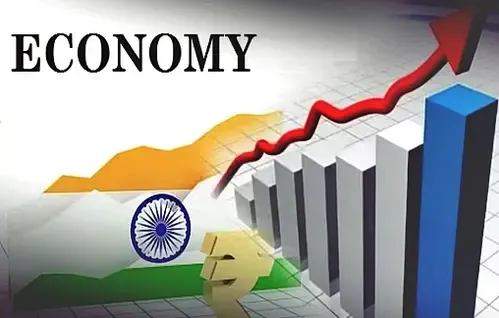Has South Korea Set a 2035 Greenhouse Gas Reduction Goal of 53-61%?

Synopsis
Key Takeaways
- South Korea's greenhouse gas emission reduction target is set between 53% and 61% by 2035.
- The decision incorporates feedback from the IPCC and the Constitutional Court.
- Supportive measures for industry will focus on decarbonization and green industry development.
- The final proposal will be submitted to the United Nations next week.
- Tax revisions for high-dividend income are also being considered to boost the stock market.
Seoul, Nov 9 (NationPress) The South Korean government, along with the ruling Democratic Party (DP), has successfully reached a consensus on the nation's greenhouse gas emission reduction target for 2035, establishing it at a range of 53% to 61%.
According to DP spokesperson Park Soo-hyun, the agreement reflects an overarching understanding of various factors, including insights from the Intergovernmental Panel on Climate Change (IPCC), a ruling from the Constitutional Court, the potential impact on future generations, and the current state of industry.
This agreed-upon target is a slight adjustment from the earlier proposals made by the climate ministry, which suggested ranges of 50% to 60% and 53% to 60%, as reported by the Yonhap news agency.
Park emphasized the need for a bold reduction target to signal the government's strong commitment to global climate efforts, stating, “We must declare our ambitious reduction goals and commitment to the world.”
In response to the challenges posed by high-carbon manufacturing prevalent in the nation, the government and the ruling party have also agreed to implement supportive measures for the industrial sector. This includes promoting decarbonization and transitioning industries, as well as fostering green industries through a comprehensive new strategy.
During the meeting, Prime Minister Kim Min-seok reiterated that the government will take into account the requests from civil and industrial sectors when finalizing the 2035 reduction target. “In line with the Constitutional Court's ruling, we will seek wisdom that incorporates perspectives from the international community, local civic groups, and the industrial sectors,” Kim stated.
Last week, two proposals for the nationally determined contribution (NDC) by 2035 were introduced, one of which will be presented to the United Nations next week. Under the first proposal, South Korea aims to achieve a greenhouse gas emissions reduction of 50% to 60% by 2035, while the second proposal aims for a reduction of 53% to 60%.
Following the announcement, both industry and environmental groups expressed their concerns regarding the proposed targets, arguing that they might be either excessively ambitious or insufficient.
The Constitutional Court emphasized in a ruling last August that the greenhouse gas reduction targets should align with scientific and international standards while minimizing burdens on future generations.
The government plans to finalize the NDC proposal within this week after thorough discussions by a presidential committee and subsequent approval by the Cabinet.
In other news, the government and the ruling party have agreed to reduce the tax rate on qualifying high-dividend income from 35% for dividends exceeding 300 million won (approximately US$205,000), as stated by DP spokesperson Park.
This development follows a tax revision proposal presented in July, which aimed for separate taxation for high-dividend stocks to incentivize dividend payouts and stimulate the stock market.
Under the new proposal, qualifying high-dividend income would be taxed at a fixed rate rather than being included in the total income subject to tiered taxation.
The ruling party advocates for a 25% tax rate, while the government initially suggested 35%.
“Specific figures will be finalized during discussions in the upcoming General Assembly sessions,” Park noted.
Since the announcement of the tax revision, the stock market has seen significant gains, with the main Korea Composite Stock Price Index (KOSPI) reaching multiple all-time highs.









